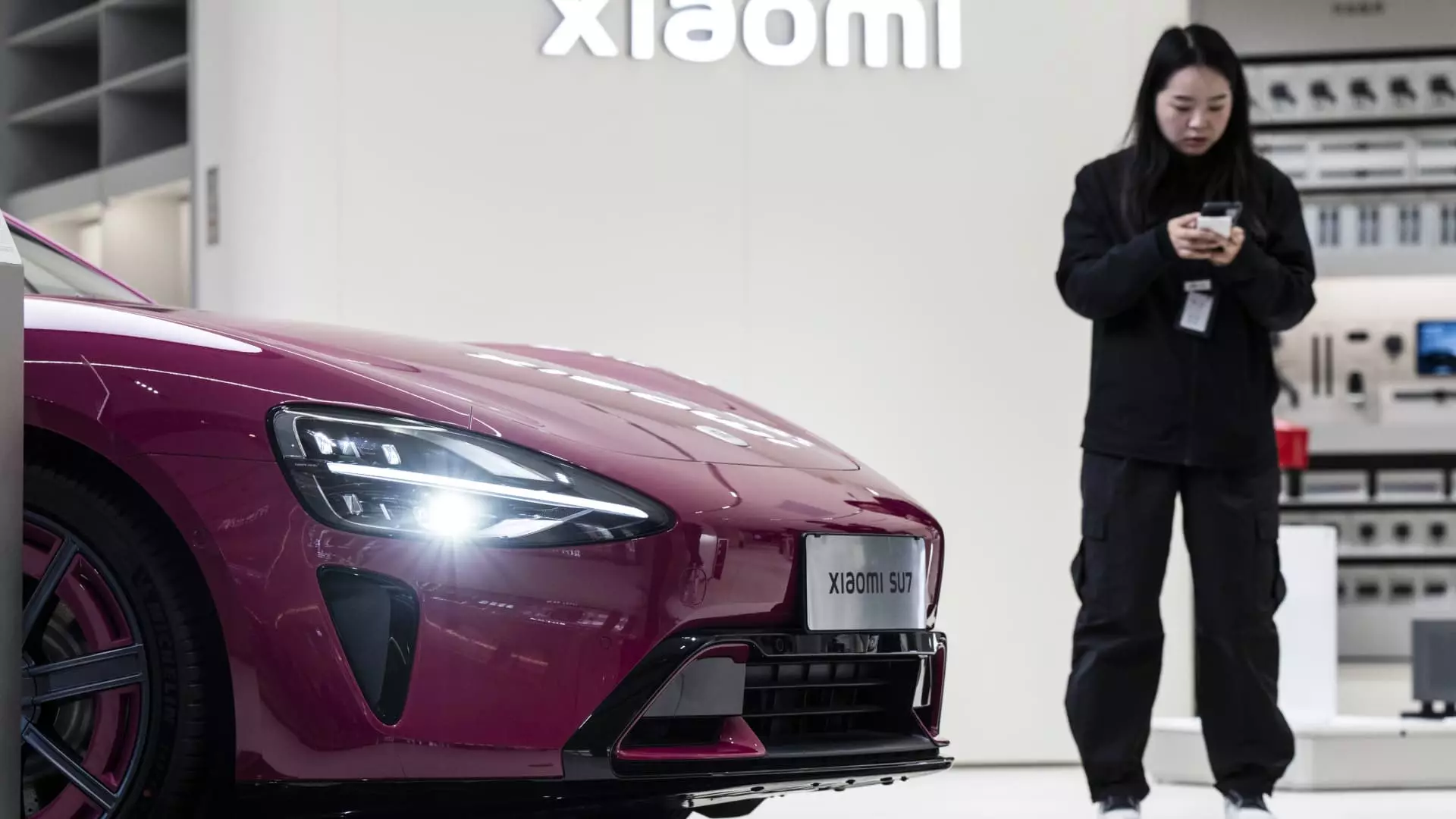The electric vehicle (EV) market in China is not just growing—it’s exploding. This surge is not merely a consequence of changing consumer preferences but a complex interaction of technology, competition, and government policies. Three key players—Xiaomi, Xpeng, and Leapmotor—each delivered over 30,000 vehicles in March, a significant leap that emphasizes a larger trend within the industry. However, this dazzling rise is marred by challenges and controversies that require a closer look.
1. The Race to the Top: A New Competitive Landscape
With BYD leading the pack, it might seem that the electric vehicle race is a straightforward affair. However, the startling metrics from Xiaomi, Xpeng, and Leapmotor suggest a dramatic shift. Xiaomi, which delivered nearly 29,000 vehicles in March alone, is no longer a mere player but a key contender in a field dominated for years by BYD. Meanwhile, Xpeng’s record of over 33,000 vehicles reflects an astonishing 268% growth year-over-year—it’s clear that these manufacturers are utilizing aggressive strategies not just to participate in the EV game but to redefine it.
This newfound competitiveness poses uncomfortable questions about market sustainability. As growth rates soar, one has to wonder if their innovative strategies can withstand market corrections. Are these companies prepared for the long-term weaknesses that can come from rapid expansion, such as strained supply chains, workforce challenges, or consumer fatigue?
2. The Automated Dilemma: Accidents in the Age of Autonomy
One cannot ignore the dark cloud looming over the electric vehicle revolution: safety concerns associated with autonomous driving. A tragic incident involving Xiaomi’s flagship model, the SU7, left three dead, casting a shadow over what should be a celebratory moment for the automaker. Reports indicate the car was operating in navigation mode when the accident occurred, invoking questions about the reliability of autonomous systems.
While the company assured that investigations are underway and has made goals for production ambitious, such events raise red flags. Are we truly ready for this leap into advanced automotive technology? Furthermore, can automakers guarantee safety while pushing for rapid technological advancements? These incidents could become a pressing challenge for all electric vehicle manufacturers, particularly as they race to deploy autonomous features that may outpace their safety protocols.
3. BYD’s Dominance: A Goliath in an Expanding Pool
While new entrants like Xiaomi and Leapmotor capture headlines with impressive monthly delivery numbers, let us not overlook BYD’s staggering achievements, including sales of nearly 372,000 units in March alone. They not only hold the crown in market share but have also demonstrated efficiency in meeting global demands with smart technology integration. With their “Super e-Platform,” which promises a remarkable range and rapid charging capabilities, BYD seems almost invincible.
However, their ascent comes with an unsettling narrative: dominance does not inherently breed innovation. One can question whether such overwhelming control can lead to complacency. Is pursuing volume at the expense of diversified innovation the right strategy? The challenge for BYD will be maintaining this pace and pushing the envelope for advancements while defending against an increasingly competitive landscape.
4. Nio and Li Auto: The Struggles of Established Players
Despite the enthusiasm surrounding newer companies, established brands like Nio and Li Auto are feeling the heat. While Nio achieved a growth rate of just 26.7% year-over-year, this performance is lackluster compared to their up-and-coming rivals. Li Auto’s growth also dwindled, leading observers to question if their traditional internal combustion engine hybrids have room left in an increasingly EV-dominated world.
Are these brands shifting fast enough to adapt to a market that is evolving at breakneck speed? Their hesitance to fully commit to their electric future may alienate tech-savvy consumers who expect more than just incremental changes. Both companies must recognize that becoming stagnant in such a vibrant sector could spell disaster.
5. The Global Context: A Tale of Two Continents
The landscape of electric vehicles in China starkly contrasts with that of the U.S., where Tesla recorded a decline in growth despite notable sales. The question arises: What are Chinese manufacturers doing differently that allows them to flourish? It appears that government policies, consumer enthusiasm, aggressive pricing, and technological prowess all play crucial roles.
China’s EV push is often praised, but it’s essential to consider the implications of fostering competitive landscapes through governmental support. How will foreign counterparts respond? As we witness this dramatic shift in market dynamics, it’s incumbent upon us—be it consumers, policymakers, or competing firms—to ensure that the electric vehicle revolution doesn’t just become an exercise in market capture. Balancing innovation with responsibility will be the true test in the years to come.

